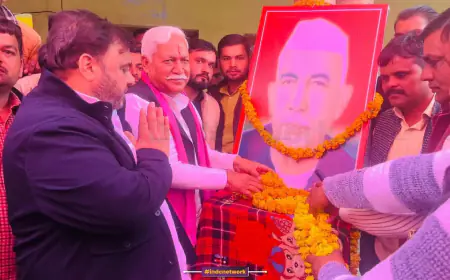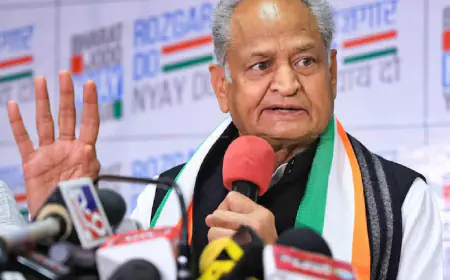Introduction : In today's rapidly advancing world, the relationship between scientists and society is more critical than ever. The increasing complexity of scientific research, coupled with the pervasive influence of misinformation, underscores the need for effective communication between scientists and the public. Science outreach programs play a pivotal role in bridging this gap, providing platforms for dialogue, education, and engagement.
These programs aim to enhance public understanding of science, promote scientific literacy, and foster a culture of inquiry and critical thinking. By connecting scientists with diverse audiences, outreach initiatives help demystify scientific concepts and make them accessible to everyone. This article will explore the various types of science outreach programs, their significance, the challenges they face, and successful case studies that demonstrate their impact.
The Importance of Science Outreach Programs
1. Enhancing Scientific Literacy : Scientific literacy is essential for informed decision-making in an increasingly complex world. Science outreach programs aim to educate the public about scientific principles, methods, and the relevance of science in everyday life.
- Understanding Scientific Concepts: Many individuals struggle to grasp fundamental scientific concepts. Outreach programs provide opportunities for hands-on learning and interactive experiences that make science more relatable and engaging.
- Critical Thinking Skills: By promoting inquiry-based learning, outreach programs encourage critical thinking and problem-solving skills. Participants learn to evaluate evidence, understand the scientific process, and develop informed opinions on scientific issues.
2. Promoting Public Understanding of Science : Effective science communication is vital for fostering public understanding of scientific research and its implications. Outreach programs bridge the gap between scientists and non-experts by making research accessible and relevant.
- Addressing Misinformation: In an age of information overload, misinformation about scientific topics can spread rapidly. Outreach programs help combat misinformation by providing accurate, evidence-based information and clarifying misconceptions.
- Engaging Diverse Audiences: Outreach initiatives aim to engage diverse audiences, including underrepresented communities, students, and families. By tailoring programs to different demographics, outreach efforts foster inclusivity and ensure that scientific knowledge is shared broadly.
3. Building Trust Between Scientists and Society : Trust is a crucial component of the relationship between scientists and the public. Science outreach programs help build this trust by fostering open communication and transparency.
- Humanizing Scientists: Outreach programs provide opportunities for scientists to interact directly with the public, humanizing the research process and showcasing the individuals behind scientific discoveries. These interactions can break down barriers and reduce skepticism toward science.
- Community Involvement: Engaging communities in scientific discussions and decision-making processes fosters a sense of ownership and involvement in scientific issues. When individuals feel that their voices are heard, trust in the scientific community increases.
Types of Science Outreach Programs
Science outreach programs come in various forms, each designed to engage the public and promote scientific understanding in unique ways. Below are some common types of outreach initiatives:
1. School-Based Outreach Programs : Schools are a primary focus for many science outreach efforts, as they play a crucial role in shaping students' attitudes toward science.
- Hands-On Workshops: Many outreach programs provide hands-on workshops and demonstrations in classrooms, allowing students to engage with scientific concepts actively. These workshops may cover topics such as biology, chemistry, physics, and environmental science.
- Curriculum Support: Outreach initiatives often align with school curricula, providing educators with resources and materials to enhance their science teaching. This support can help teachers incorporate inquiry-based learning and real-world applications into their lessons.
2. Community Engagement Programs : Community engagement programs aim to connect scientists with local communities, fostering dialogue and collaboration.
- Public Lectures and Workshops: Many science outreach programs organize public lectures, workshops, and seminars featuring scientists who present their research in accessible language. These events encourage community members to ask questions and engage in discussions about scientific topics.
- Community Science Projects: Community science initiatives invite local residents to participate in scientific research, often collecting data on environmental issues or health-related topics. This involvement fosters a sense of ownership and encourages citizens to contribute to scientific knowledge.
3. Science Festivals and Events : Science festivals and events are vibrant platforms for outreach, attracting diverse audiences and promoting scientific engagement.
- Interactive Exhibits: Science festivals often feature interactive exhibits and demonstrations that allow participants to explore scientific concepts through hands-on experiences. These exhibits can cover a wide range of topics, from robotics to environmental science.
- Networking Opportunities: Festivals provide opportunities for scientists to connect with each other and the public. Networking fosters collaboration and encourages scientists to engage with diverse communities.
4. Online and Digital Outreach : With the rise of digital technology, online outreach programs have become increasingly popular, allowing for broader engagement.
- Webinars and Virtual Events: Online webinars and virtual events enable scientists to reach global audiences, sharing their research and expertise. These events often include interactive Q&A sessions, allowing participants to engage directly with scientists.
- Social Media Campaigns: Social media platforms serve as powerful tools for science communication, allowing scientists to share their work, dispel myths, and engage with the public. Creative campaigns can reach a wide audience and promote scientific topics in an engaging manner.
Successful Case Studies of Science Outreach Programs
1. NASA's "Science Activation" Program : NASA's "Science Activation" program aims to enhance public engagement with science through various outreach initiatives.
- Community Collaboration: The program fosters collaboration between NASA scientists and community organizations to develop tailored educational resources. By engaging local communities, the program promotes STEM education and encourages scientific inquiry.
- Diverse Programming: Through workshops, public events, and online resources, the program reaches diverse audiences, including underserved populations. This inclusivity ensures that scientific knowledge is accessible to all.
2. The Smithsonian Science Education Center : The Smithsonian Science Education Center is dedicated to improving science education through innovative outreach initiatives.
- Curriculum Development: The center develops high-quality science curricula for schools, emphasizing inquiry-based learning and real-world applications. This curriculum supports teachers in delivering engaging science lessons.
- Community Engagement: The center hosts community events, workshops, and family science nights, inviting local residents to engage with science in a fun and interactive manner. These events foster a sense of community and promote scientific literacy.
3. The Royal Society's "Science and Society" Program : The Royal Society in the United Kingdom runs the "Science and Society" program, aimed at promoting dialogue between scientists and the public.
- Public Dialogues: The program organizes public dialogues, where scientists engage with diverse audiences to discuss pressing scientific issues. These dialogues foster understanding and trust between scientists and the public.
- Outreach Resources: The program provides resources and training for scientists to enhance their communication skills, enabling them to effectively convey their research to non-expert audiences.
4. The American Museum of Natural History's "Science Talk" Program : The American Museum of Natural History (AMNH) runs the "Science Talk" program, focusing on science communication and public engagement.
- Public Lectures and Panels: The program hosts public lectures and panel discussions featuring scientists and researchers who share their work with the community. These events encourage dialogue and promote understanding of complex scientific topics.
- Online Resources: The AMNH provides online resources and educational materials that allow individuals to explore scientific topics at their own pace. This accessibility enhances public engagement with science.
Challenges Facing Science Outreach Programs
Despite their significant contributions, science outreach programs face several challenges that can hinder their effectiveness.
1. Funding Constraints : Many outreach programs operate on limited budgets, which can restrict their ability to reach diverse audiences and develop new initiatives.
- Dependence on Grants and Donations: Outreach programs often rely on grants, donations, and sponsorships to fund their initiatives. Fluctuations in funding sources can impact the sustainability of programs.
- Resource Allocation: Limited resources may lead to challenges in staffing, training, and developing new outreach materials. Programs must find creative solutions to maximize their impact despite financial constraints.
2. Measuring Impact and Effectiveness : Assessing the impact and effectiveness of outreach programs can be challenging, making it difficult to demonstrate their value to stakeholders.
- Data Collection: Gathering data on participant engagement, learning outcomes, and community impact requires time and resources. Programs must prioritize evaluation efforts to measure their success effectively.
- Long-Term Impact: Assessing the long-term impact of outreach programs on participants' attitudes, knowledge, and behaviors can be complex. Programs should develop strategies for tracking outcomes over time.
3. Engaging Diverse Audiences : Reaching and engaging diverse audiences is essential for successful outreach, yet it can be challenging.
- Cultural Sensitivity: Outreach programs must be culturally sensitive and inclusive in their messaging and programming. Understanding the unique interests and needs of different communities is essential for fostering meaningful connections.
- Language Accessibility: Providing materials and programming in multiple languages can enhance accessibility for non-native speakers and increase engagement among diverse populations.
Strategies for Enhancing Science Outreach Programs
To overcome challenges and enhance the effectiveness of science outreach programs, several strategies can be adopted:
1. Collaborative Partnerships : Collaborating with local organizations, schools, and community groups can enhance the relevance and impact of outreach efforts.
- Co-Creation of Programs: Engaging community members in the co-creation of programs ensures that content resonates with their interests and needs. Collaborative partnerships can lead to more meaningful experiences for participants.
- Leveraging Resources: By pooling resources and expertise with partner organizations, outreach programs can expand their reach and impact. Joint initiatives can attract diverse audiences and create a more vibrant learning environment.
2. Innovative Programming : Developing innovative programming that embraces current trends and technologies can enhance public engagement.
- Interactive Experiences: Offering hands-on workshops, demonstrations, and interactive exhibits fosters a sense of community and connection among participants. These experiences can help build a lasting interest in science and learning.
- Utilizing Technology: Embracing digital tools and platforms can expand outreach and engagement. Virtual events, online resources, and social media campaigns can reach broader audiences and promote ongoing learning.
3. Continuous Evaluation and Improvement : Regularly evaluating programs and initiatives is essential for ensuring their effectiveness and relevance.
- Visitor Feedback: Gathering feedback from participants through surveys and focus groups can provide valuable insights into their experiences and preferences. This feedback can inform future programming decisions and improvements.
- Adapting to Change: Outreach programs must remain flexible and adaptable to changing societal needs and expectations. Continuous improvement and innovation are essential for maintaining public interest and engagement.
Conclusion : Science outreach programs play a crucial role in bridging the gap between scientists and society. By enhancing scientific literacy, promoting public understanding of science, and building trust, these initiatives contribute significantly to creating an informed citizenry. Despite facing challenges such as funding constraints and the need for effective evaluation, outreach programs have demonstrated their potential to engage diverse audiences and foster a culture of science engagement.
Through innovative programming, collaborative partnerships, and continuous improvement, science outreach programs can strengthen their impact and contribute to a more scientifically literate and engaged society. As these initiatives evolve, they will continue to play an essential role in connecting scientists with communities and inspiring future generations to embrace the wonders of science.
This comprehensive article explores the role of science outreach programs in bridging the gap between scientists and society. If you need any specific adjustments or additional information, feel free to let me know!














































































































































































